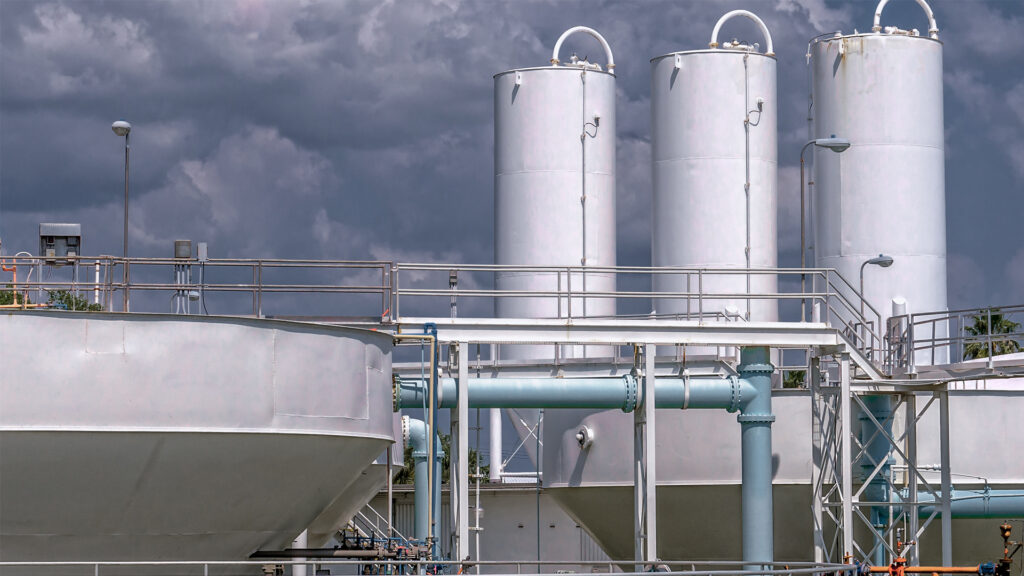By Jillian Kaplan, Florida Student News Watch
A report issued by the South Florida Water Management District in December shows that during the last five years, saltwater has pushed even further inland underground in South Florida.
Saltwater intrusion occurs when seawater advances into freshwater aquifers, driven by factors such as over-extraction from the aquifers, urbanization and rising sea levels. The saltwater interface, tracked across Broward, Martin, Palm Beach and St. Lucie counties, threatens the drinking water supply, agriculture viability and ecological health of over 4 million residents.
Map reveals inland saltwater intrusion accelerating with rising seas
Sea levels have already risen by about a foot since 1992 and are expected to rise again by about two feet along South Florida coasts by 2060, according to projections by the National Oceanic and Atmospheric Administration.
Since 2009, the South Florida Water Management District (SFWMD) has implemented a Saltwater Interface Monitoring and Mapping Program to draw the lines every five years where ocean saltwater meets underground freshwater, using data from U.S. Geological Survey and Water Management District wells. These maps help identify areas of concern for hydrologists and adjust monitoring efforts as needed.
Compared to the 2019 report the saltwater interface has moved significantly inland. Broward County locations, including Hallandale Beach, Hollywood and Davie, show some of the largest changes.
In Hallandale Beach, the aquifer has shifted inland by over a mile, about the same distance as in Fort Lauderdale. Since 2019, the city of Davie has experienced a staggering 4-mile inward shift. These findings highlight a concerning trend of saltwater affecting South Florida coastal communities.
Potential risks to human health and the environment
Tara Root, a hydrologist with the U.S. Geological Survey at the Water Science Center in Miami-Dade County, highlights that declining inland water levels, long-term droughts and rising sea levels are key contributors to the issue.

“Excessive pumping draws water levels down inland, allowing more saltwater to come further inland,” Root said.
More than 1,000 monitoring wells across the region reveal the growing threat of saltwater intrusion. In southern areas, chloride levels are particularly concerning, with wells in Hallandale and West Palm Beach exceeding 10,000 mg/L — a measure of how salty the water is. While levels generally drop further north, outliers persist, including a well in Boynton Beach registering 16,050 mg/L, about half as salty as ocean water
Elevated salt in drinking water can cause human health concerns such as hypertension and kidney failure, particularly in vulnerable populations. Contaminated groundwater reduces the availability of clean water for drinking, cooking and sanitation, which aggravates water scarcity in impacted areas.
Saltwater intrusion and the resulting contamination of drinking water also carry significant economic impacts, including the costly relocation of wells.
“Moving wells is expensive. There are also impacts if you’re using a (salty) water supply,” Root said. “Additionally, saltwater intrusion may influence the agricultural industry and harm the productivity of crops. Continued monitoring and cooperation between scientists and managers, using science to inform decisions, is critical.”
Efforts to combat saltwater intrusion in South Florida
Solutions are underway, mainly in a series of projects from the SFWMD.
One key project, the “Picayune Strand Restoration,” led by the U.S. Army Corps of Engineers, aims to improve water supply, prevent saltwater intrusion, restore groundwater levels and enhance flood protection by restoring wetlands and sending more freshwater flowing through protected state land in Southwest Florida.

Similarly, the district’s Sea Level Rise and Flood Resiliency Plan focuses on mitigating flooding risks and addressing climate change’s impact on water resources, both of which play a critical role in saltwater intrusion.
Pete Kwiatkowski, of the district’s Water Supply Bureau, addressed the ongoing challenges of saltwater intrusion in an October board meeting.
“The (saltwater) interface is dynamic, meaning it is moving all the time in response to dry conditions and wet conditions from heavy rainfall,” Kwiatkowski said. “It is being influenced by rainfall, long-term wellfield pumpage and sea level rise.”
Recent data show chloride levels in aquifers rose from 250 mg in the late 1990s to 600 mg in 2024, indicating saltwater intrusion.
Examples of successful mitigation efforts include reclaimed water systems in areas such as Pompano Beach, where reduced wellfield pumpage and water recharge have caused the interface to retreat. The city of Naples also implemented a reclaimed water system as part of infrastructure updates, protecting its water supply.
“Wellfields are a major water supply source, and it’s important to protect that investment,” Kwiatkowski said. “Once saltwater enters wells, making them saline, it is very difficult — if not impossible — to reverse.”
This piece was originally published by Florida Student News Watch at https://www.studentnewswatch.org/post/new-report-finds-that-as-sea-levels-rise-underground-saltwater-surges-inland-in-south-florida. Editor’s note: The spelling of Peter Kwiatkowski’s name was corrected from the original version of this piece. Banner photo: Waves crash against a seawall in South Florida (iStock image).
Sign up for The Invading Sea newsletter by visiting here. To support The Invading Sea, click here to make a donation. If you are interested in submitting an opinion piece to The Invading Sea, email Editor Nathan Crabbe at nc*****@*au.edu. To learn more about how sea level rise affects Florida’s drinking water, water the video below.




You completely botched the spelling of my last name, which was clearly printed on the first page of my PowerPoint slide deck or had you bothered to reach out to me. Do better
My apologies — I made the correction.
To the reporter who did this story….the person you quoted is named Peter kwiatkowski. You butchered his name. Great reporting!!!!
Good story, Jillian! Way to go.